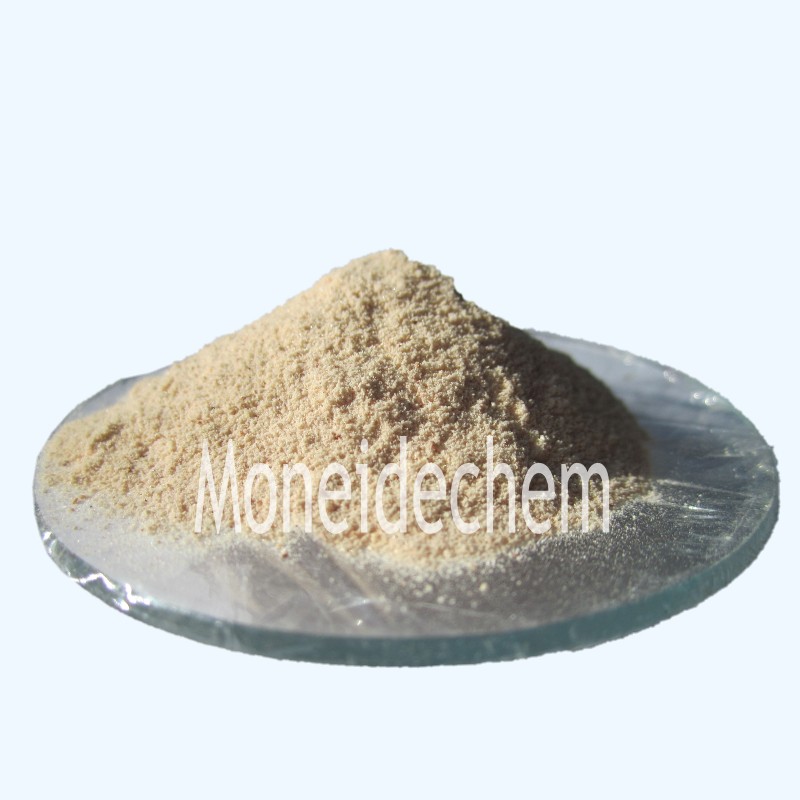Moneide Chemicals
Tel: 86-315-8309571
WhatsApp/WeChat/Mobile: 0086-15633399667
Skype: janet-honest
Mail: sales@moneidechem.com
Address: 2-7-523 Jidong Building Materials Tangshan, Hebei 064000 China
Bromocresol Purple
|
Chemical Name |
Bromocresol Purple |
|
Synonyms |
5',5''-Dibromo-o-cresolsulfonephthalein; BCP |
|
CAS No. |
115-40-2 |
|
Molecular formula |
C21H16Br2O5S |
|
EINECS № |
204-087-8 |
|
Molecular weight |
540.22 |
|
Molecular Structure |
|
|
Details |
Appearance: Light yellow or light rose red crystalline powder Maximal absorption wavelength: λ1(PH5.2) 427~431 λ2 (PH6.8) 588~591 Absorption coefficient(L/cm·g): α1(λ1PH5.2, dry sample) 40~45 α2 (λ2PH6.8, dry sample) 100.0~110.0 Solubility in alkali: Passes test Sulfated ash: 0.1%max Loss on drying: 0.5%max Solubility: solve in alcohol,insolve in water. Packing: 25kg/ fibre drum |
|
Main Application |
Indicator |
What does the bromocresol purple indicator test for?
Bromocresol purple is primarily used as a pH indicator that detects acidity changes in the range of pH 5.2 (yellow) to 6.8 (purple). It's particularly valuable in microbiology for identifying carbohydrate fermentation in culture media, where acid production causes a distinct color shift. The indicator also serves in clinical chemistry to measure serum albumin levels through a specialized colorimetric method. In cell biology, it helps monitor metabolic activity by indicating pH changes in cell cultures. Its selective color transition makes it ideal for titration experiments requiring precise endpoint detection in weakly acidic to near-neutral solutions. The indicator's reliability in biological systems has made it a standard tool in both diagnostic and research laboratories.
What is the function of bromocresol purple?
Bromocresol purple functions as a visual pH signaling agent that undergoes reversible color changes in response to hydrogen ion concentration. Its dual role as both an acid-base indicator and a protein-binding dye enables diverse applications in analytical chemistry. The compound forms the basis of several diagnostic tests, including those for liver function and protein metabolism assessment. In microbial testing, it reveals metabolic acid production by pathogenic organisms. The dye's stable color transition provides clear visual confirmation of chemical reactions without interfering with the test system. Its ability to bind selectively to certain proteins allows for specific biochemical detection methods while maintaining excellent lightfastness and chemical stability in solution.
Is bromocresol purple toxic?
Bromocresol purple exhibits low acute toxicity but requires careful handling as a laboratory chemical. While not classified as highly hazardous, ingestion or prolonged skin contact may cause mild irritation to mucous membranes and digestive tissues. The compound's safety profile allows its use in diagnostic applications, though direct intravenous administration should be avoided. Proper laboratory precautions including gloves and eye protection are recommended when working with concentrated solutions. Environmental toxicity is considered moderate, requiring responsible disposal to prevent aquatic contamination. Regulatory agencies approve its use in medical testing at specified concentrations, where it poses minimal risk to patients. Always consult safety data sheets for specific handling guidelines in research or industrial settings.






























